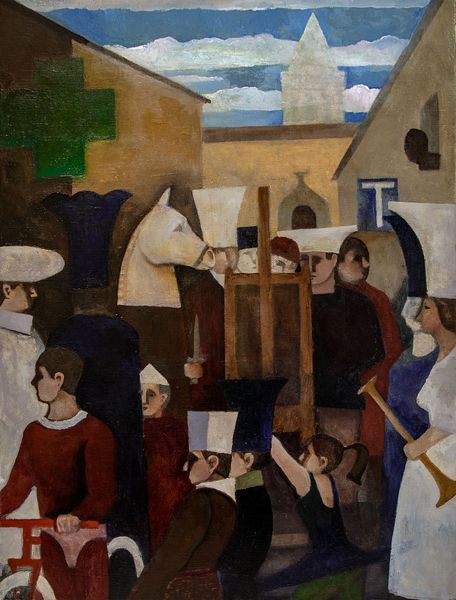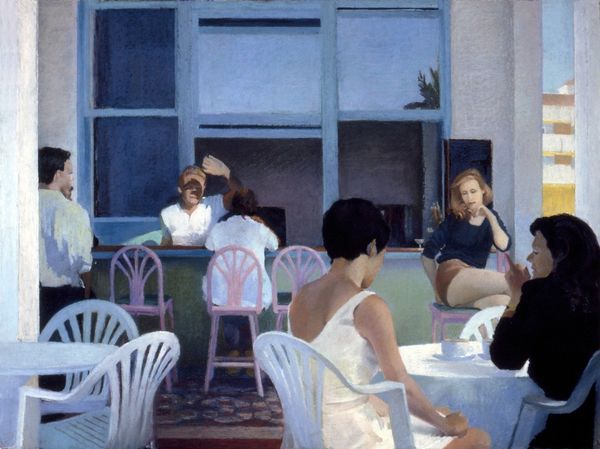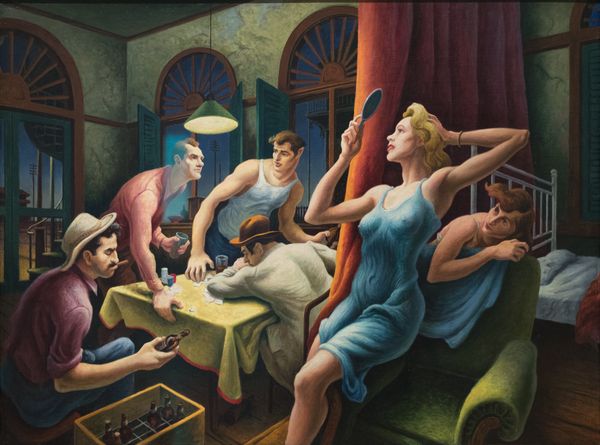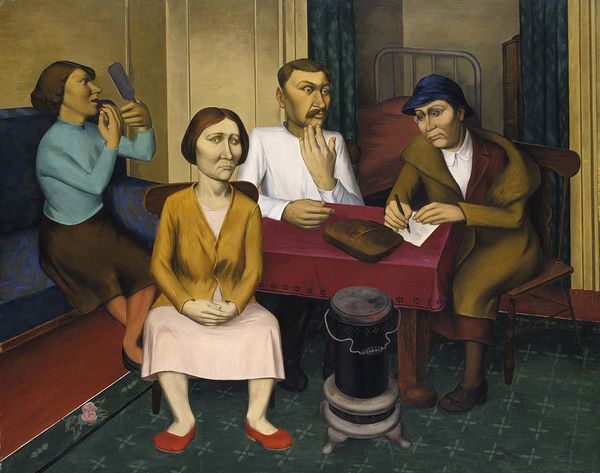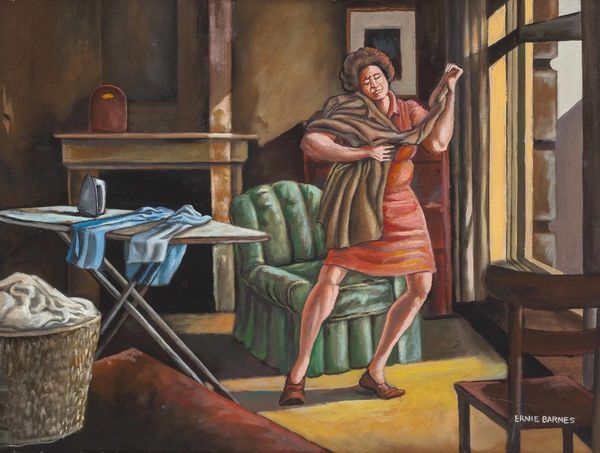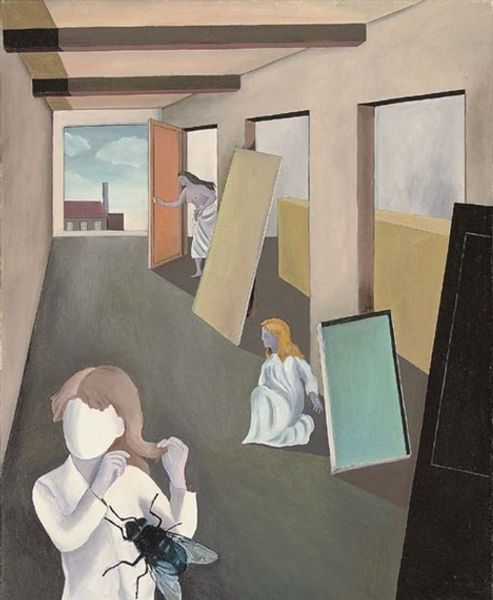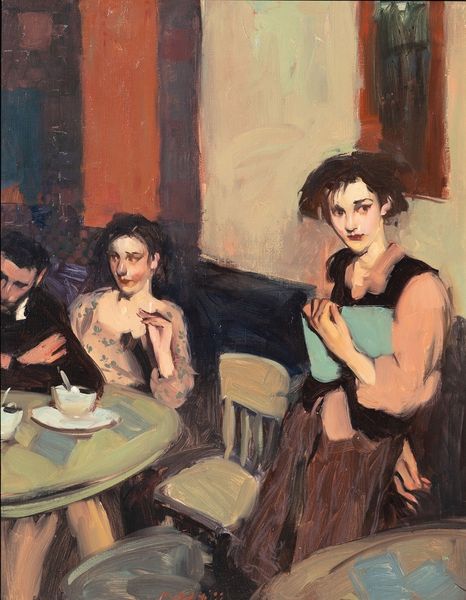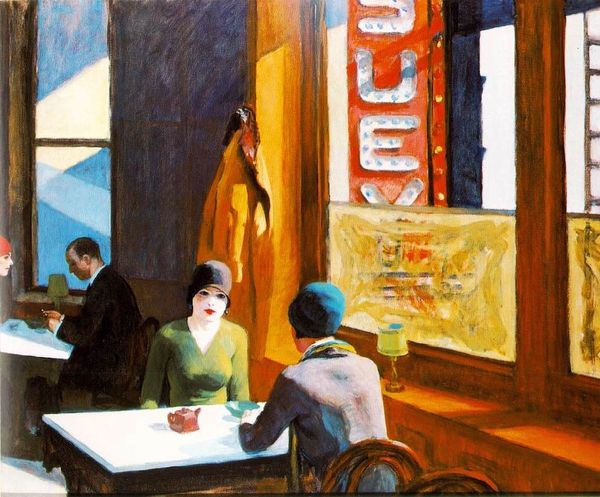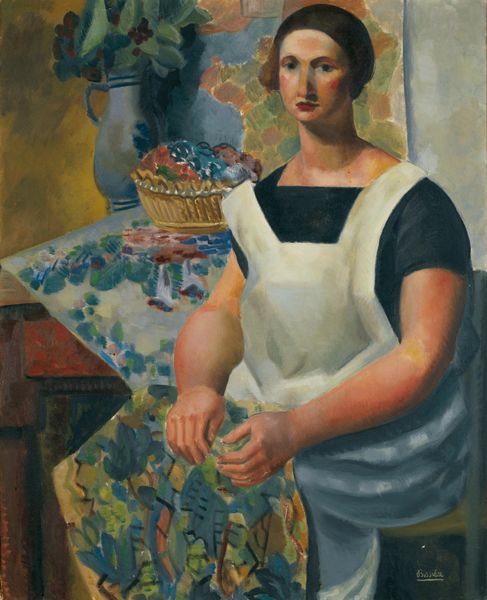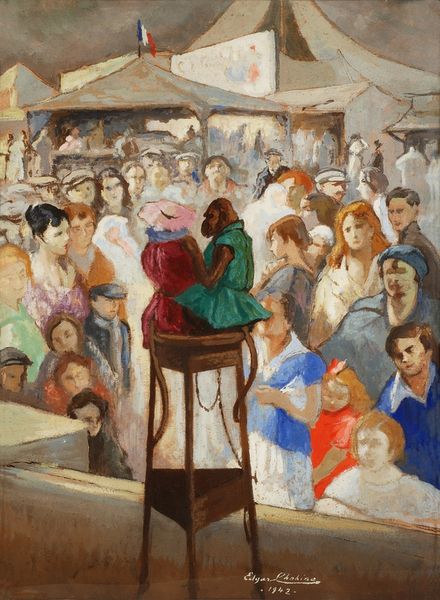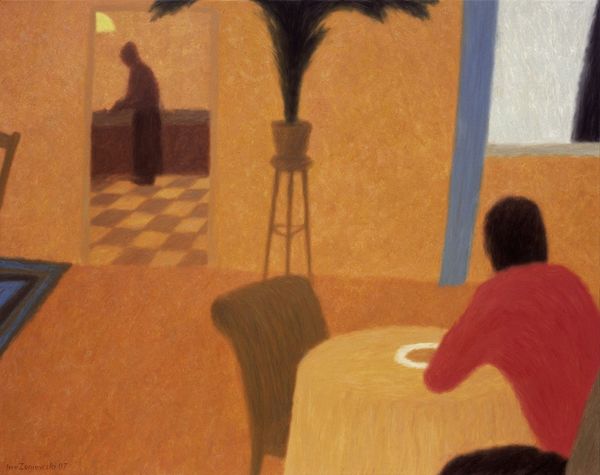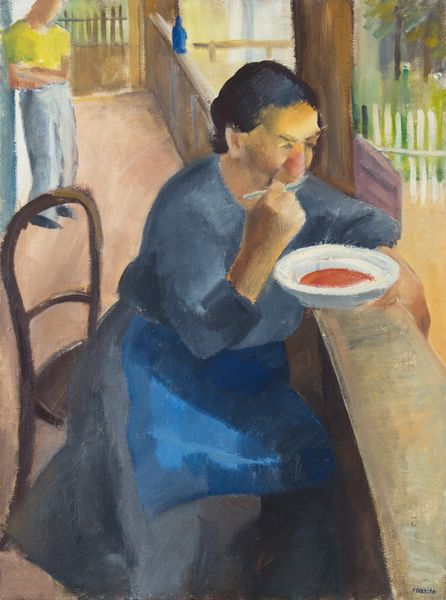
painting, oil-paint
#
portrait
#
art-deco
#
painting
#
oil-paint
#
oil painting
#
group-portraits
#
cityscape
#
genre-painting
#
portrait art
#
expressionist
Copyright: Sandor Bortnyik,Fair Use
Editor: Here we have Sándor Bortnyik's "Interior Anlakkal," thought to be painted around 1925. It's an oil painting depicting five figures within a minimalist interior. The colors are muted yet striking, and it has an unsettling, dreamlike quality to it. What's your initial take on this, especially with respect to the symbolism employed? Curator: The symbols, you’re right to point to them. This image speaks to the changing roles within society, perhaps reflecting the anxieties and aspirations of the interwar period. Note the juxtaposition of the interior and exterior. The cityscape visible through the window suggests modernity, while the figures inside seem to occupy a timeless, almost classical space. What emotions or feelings do the figures’ poses and arrangements evoke in you? Editor: A sense of detachment, almost isolation, despite being in the same room. No one seems to be interacting, each is self-absorbed in their own world. Is there a specific reason for such austere imagery? Curator: Indeed, and it invites further exploration. The mirror, the book, the musical instrument, the cigarette: they are all loaded with symbolism. Consider the mirror – a symbol of vanity but also self-reflection, truth and deception. The question isn’t just what’s being reflected but who is doing the looking, what kind of identity is this new generation trying to project or claim? Bortnyik taps into our cultural memory, repurposing it for a modern age. Editor: So it’s about societal anxieties and changes reflected through symbolic representation rather than direct storytelling? Curator: Precisely. Bortnyik gives us a stage, the actors, and some props, but the interpretation is left open. It allows us to project our own understandings onto the artwork. Editor: This has given me a richer understanding of the piece, viewing the characters as part of an orchestrated arrangement rather than independent people. Curator: That's the beauty of exploring art; it reframes our perspectives. It reminds us of the psychological power embedded within the art, connecting the then to the now.
Comments
No comments
Be the first to comment and join the conversation on the ultimate creative platform.
